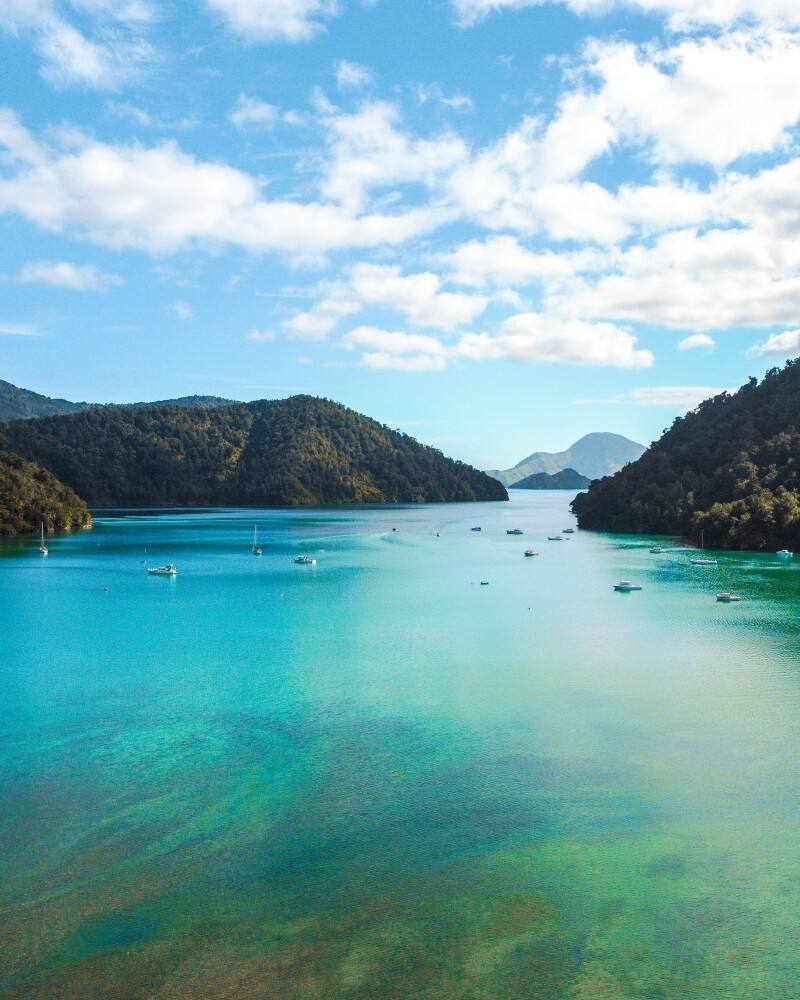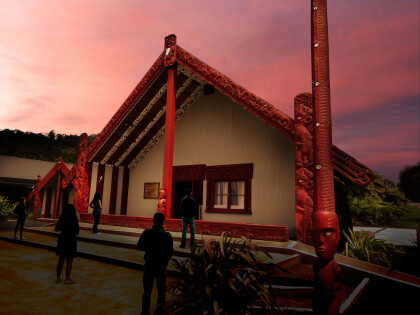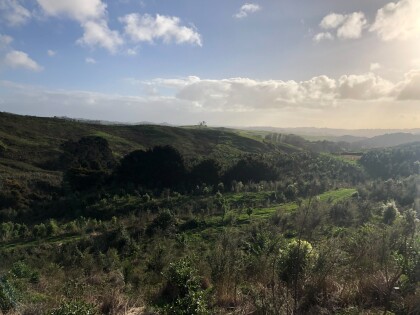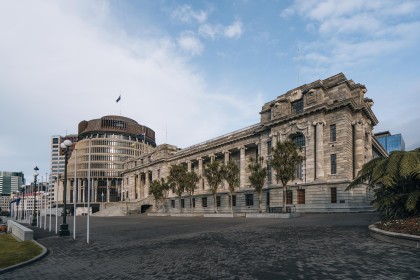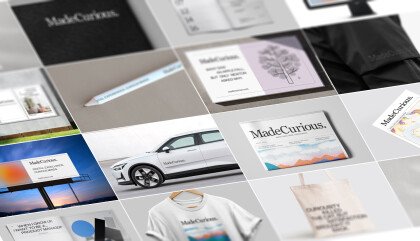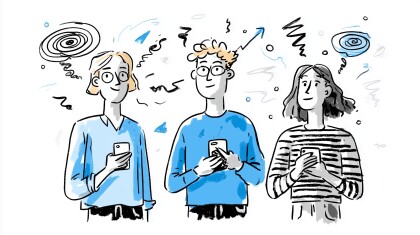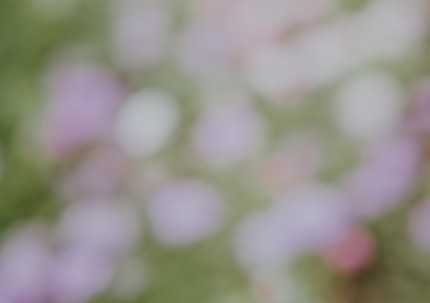Media Suite Director George Wills recently shared our Cruise Guide project at the Department of Internal Affairs Emerging Tech Series. Thanks to Cyclone Gita, he presented remotely. Just hours before the presentation, Version 2 of the app was released.
Read on to find out more about the 25+ APIs and Open Data sets that went into this project.
Media Suite collaborates on a number of projects with the Marlborough District Council. One of the best known public-facing projects is Cruise Guide – an app designed to collect data on recreational use in the Marlborough Sounds, while simultaneously providing a handy tool for boaties and holidaymakers.
The Background
The Marlborough District Council manages the most coastline of any council in New Zealand. The region is diverse, both sub-tropical and sub-alpine. It is extremely biodiverse, and also holds unique cultural significance for New Zealanders. The area caters to a wide range of commercial ventures, including the majority of New Zealand’s $380 million aquaculture industry. By 2025, the industry hopes to be worth $1 billion to our economy.
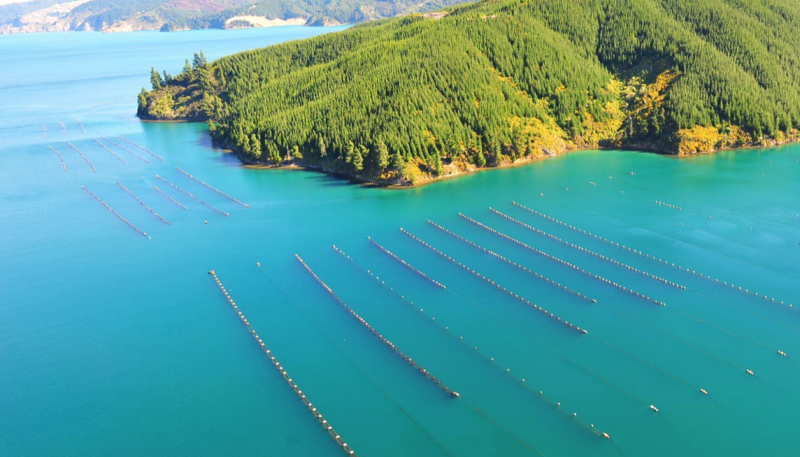
It’s diversity is one of its greatest assets, but also makes it a minefield to manage. The council must balance commercial ambition with recreational preservation, environmental concerns, and cultural significance. No easy feat!
The council receives a lot of information on most aspects of the region, but it is particularly hard to gather data on recreational use. For starters, many users do not live locally, making them hard to engage with. Communication is challenging.
Time and again, Keith Murray’s 1979 book, New Zealand Cruising Guide, was referenced regarding recreational use in the Sounds. Given its age, and its print media status, the information wasn’t always up to date. The council decided the best way to gather current, relevant information was to develop an app for boaties, which simultaneously collects useful information that could then be used to balance the equation.
The Technical Guff
The council collaborated with Media Suite on this challenging project.
More than 25 Open Data sets and APIs later, Cruise Guide was eventually born.
APIs and data sets were used for the following:
- Private and club boat moorings (MDC)
- Resource consent data and APIs for foreshore structures (MDC)
- Special use zones like waterskiing lanes
- Public facilities like onshore toilets and fresh water sources
- Department of Conservation campgrounds and huts
One of the most interesting challenges was integrating nautical charts. More than a dozen Land Information New Zealand charts were “stitched together” on one tile server, which runs on the phone and works without cell coverage, ensuring boaties can access the charts from anywhere, at any time.
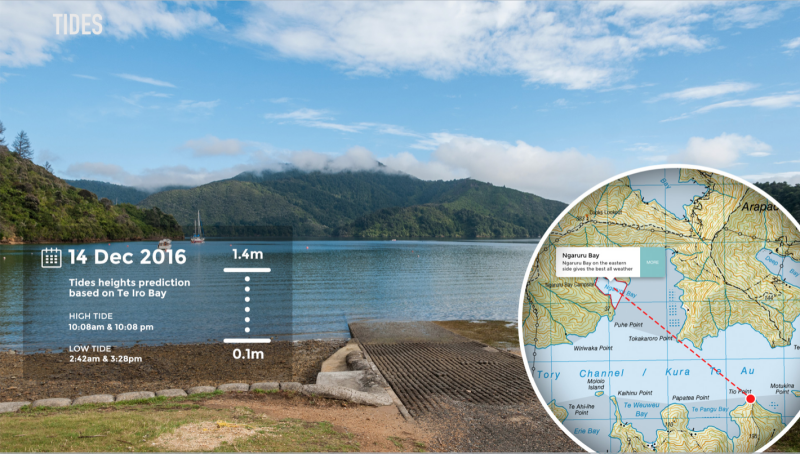
Our developers also got ambitious when it came to providing useful tide predictions. Originally, the idea was to grab a MetService API. But it only gave predictions for Picton. It also wouldn’t work offline. In the end, it was a data set updated annually by LINZ, in spreadsheet form, that was the answer. Using four years of tide predictions, the app uses calculated offsets for 28 secondary ports, providing accurate tidal predictions, plus or minus two minutes. It’s also linked to the bays as well. Users can search predictions four years in advance.
Using this method does come with a risk, as LINZ has not guaranteed it will continue to update this spreadsheet. However, it does currently provide the most accurate data available.
The app also allows the Harbourmaster’s Office to send push notifications to users about weather warnings or useful information. App users can also send information the other way, updating the Harbourmaster on incidents at sea or advising of broken facilities. Users later requested live webcam feeds so they could check weather conditions in advance. The council then installed those webcams around the Sounds which are now linked to the app.
The Challenges
A lot of the data was not immediately fit for purpose. Work was required to manually “mash it up” and make it user-friendly. The tide data found in a spreadsheet would’ve been easier to use in an API.
Cruise Guide aimed to provide the names of all the bays in the sounds – which meant combining all various records for the area into one. It needed a GIS analyst and significant local knowledge to compile the dataset, and even then, some bay names were disputed. The council therefore chose not to release the bay names as Open Data.
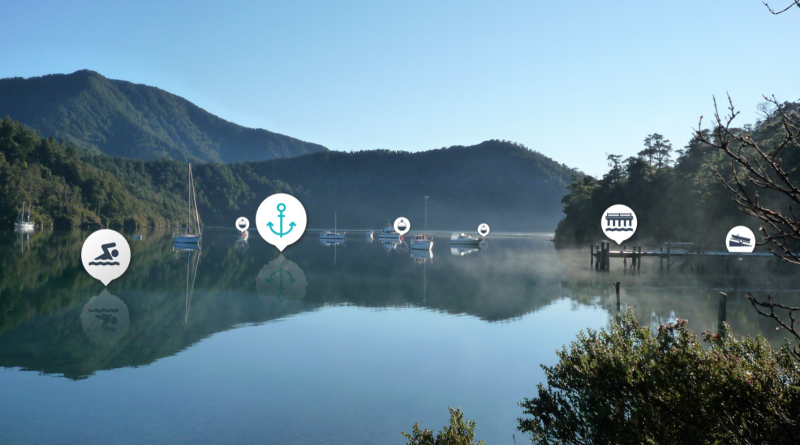
Murray’s original book provided some useful detail that was included in Cruise Guide. However, the licensing of that content took a year to finalise. While Cruise Guide was finished in 2015, it was not released until the deal closed in 2016.
The Successes
what worked exceptionally well in the project was bringing together a really diverse set of stakeholders from different departments in the council. They all got to collaborate on the design and roadmap for the project.” – George
Media Suite is all about collaboration – both between ourselves and our clients, and within the client’s own team. Cruise Guide relied on, and succeeded thanks to the teamwork and commitment from many council departments with a stake in the outcome.
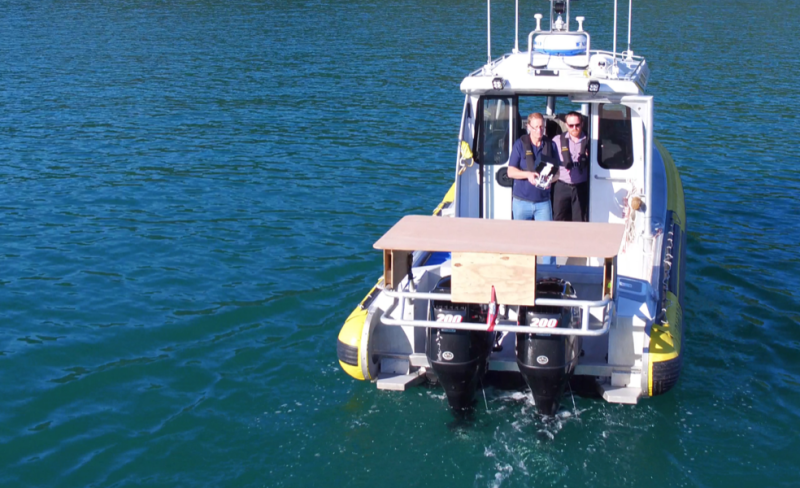
The Product Owner was the Regulatory Department, invested in the usability of the app. The Web Team provided initial wireframes, and now manage some of the content. The council IT Department provided project governance and API integration support, and the Harbourmaster worked to ensure the app would be useful for boaties.
In fact, some of the most useful people in the project were those without longstanding boating knowledge. They helped provide the feedback that made the app usable for every person in the Sounds.
Since the app’s release, the public have been providing feedback to assist in its improvement.
At the end of the day, this app provides “data collection to inform future decision making in the council.”
Media Suite is proud to have been a part of developing Cruise Guide. You can download the app for Android or iPhone, or check it out online at www.cruiseguide.co.nz.
Banner image: Photo by Mark de Jong on Unsplash

